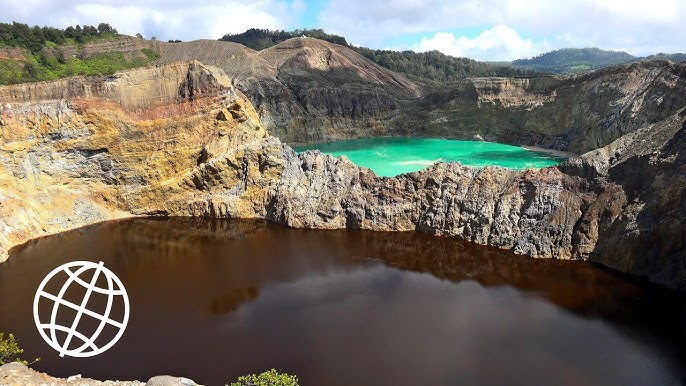Thailand’s floating markets are living snapshots of the Kingdom’s watery past, where wooden boats laden with vibrant fruits, sizzling street food, and handmade crafts glide through narrow canals like scenes from a bygone era. Once the bustling hubs of daily commerce in Bangkok’s ancient waterways, these markets have evolved into must-visit attractions that blend history, flavor, and photogenic charm. In 2025, as Thailand’s tourism rebounds with eco-friendly initiatives and extended visa perks, floating markets remain a top draw for travelers seeking authentic experiences beyond the beaches. From the iconic Damnoen Saduak to hidden gems like Tha Kha, this guide reveals why these floating paradises are essential for any Thailand itinerary, complete with insider tips for your visit.
The History of Floating Markets: From Necessity to National Treasure
Floating markets trace their roots to the Ayutthaya Kingdom (14th-18th centuries), when Bangkok’s sprawling canal network known as the “Venice of the East” served as the city’s primary arteries for trade. With no roads in sight, vendors poled long-tail boats through khlongs (canals), hawking fresh produce, silk, and spices to riverside communities. This waterborne economy thrived until the 20th century, when modernization and urban sprawl shifted commerce to land. Today, only a handful retain their original vibrancy, preserved as cultural icons that draw millions annually.
In Bangkok and surrounding provinces like Ratchaburi and Samut Songkhram, these markets symbolize Thailand’s resilient spirit. They’re not just relics; they’re UNESCO-recognized glimpses into sustainable living, where boats reduce carbon footprints and local economies flourish. Modern twists like weekend pop-ups and firefly tours keep the tradition alive, making them perfect for immersive travel in 2025.
Iconic Floating Markets in Thailand: Top Picks for Every Traveler
Thailand boasts over a dozen floating markets, but these standouts offer diverse vibes, from touristy spectacles to serene local haunts. Here’s a curated list:
1. Damnoen Saduak Floating Market: The Granddaddy of Them All
Just 100 km southwest of Bangkok in Ratchaburi Province, Damnoen Saduak is Thailand’s most famous floating market and the world’s largest, sprawling along a 3.2 km man-made canal. Open daily from 7 AM, it’s a riot of color with hundreds of paddle boats selling coconuts, mango sticky rice, and elephant-patterned souvenirs. Expect crowds and higher prices, but the photogenic chaos vendors paddling right up to your boat is unbeatable. Pair it with a visit to nearby Maeklong Railway Market for a full-day adventure.
2. Amphawa Floating Market: Evening Magic and Firefly Glow
In Samut Songkhram, 80 km from Bangkok, Amphawa shines after dark (4 PM-10 PM, weekends only). Less commercial than Damnoen Saduak, it’s famed for seafood grilled on boats, coconut pancakes, and romantic firefly boat tours along the Lumphawa Canal. Locals outnumber tourists here, offering an authentic taste of riverside life amid lantern-lit stalls. It’s ideal for foodies and couples, with boat rides costing just 60 THB.
3. Tha Kha Floating Market: The Authentic Hidden Gem
A 1-hour drive from Bangkok in Samut Songkhram, this petite market (weekends 8 AM-4 PM) feels worlds away from the hype. Vendors in traditional hats sell fresh veggies and homemade sweets from wooden boats, with onshore stalls adding handicrafts. It’s rarely crowded, perfect for bargaining and chatting with locals try the boat noodles or grilled prawns for under 100 THB. Combine with a temple visit for a low-key cultural dip.
4. Taling Chan Floating Market: Bangkok’s Weekend Escape
Just 45 minutes from central Bangkok in Thonburi, Taling Chan (Saturdays-Sundays, 8 AM-6 PM) blends floating boats with lush gardens and live music. Sample som tam (papaya salad) or khanom krok (coconut pancakes) while cruising the khlong. It’s family-friendly and less touristy, with boat rentals at 20 THB great for a half-day outing without leaving the city.
5. Bang Phli Floating Market: A Historical Feast
One of Bangkok’s oldest (dating to the 19th century), Bang Phli in Samut Prakan (weekends 6 AM-1 PM) buzzes with over 100 years of tradition. Boats overflow with tropical fruits and street eats like pad Thai omelets, near quirky temple sculptures (think sunglass-wearing giants). It’s a food lover’s haven, with entry free and vibes that evoke old Siam.
Beyond Shopping: Food, Culture, and Unique Experiences
Floating markets are sensory overloads: The air hums with vendors’ calls, sizzles with grill smoke, and bursts with tropical scents. Food is the star don’t miss boat-fresh seafood, mango sticky rice, or Thai iced coffee for 50-100 THB. Culturally, they’re windows to Thai ingenuity, with many markets hosting weaving demos or monk blessings. In 2025, look for sustainable twists like plastic-free zones and eco-boat tours. For adventure, hop a long-tail boat (20-50 THB) to spot kingfishers or join a cooking class onshore.
How to Visit Thailand’s Floating Markets: Your 2025 Guide
Getting There
- From Bangkok: Taxis or Grab rides cost 1,200-1,500 THB round-trip; public buses (e.g., #79 to Damnoen Saduak) are 80 THB but require transfers. Organized tours via Klook or GetYourGuide run 700-1,000 THB, including transport and boat rides book early for 2025 peak season.
- Best Time: Early mornings (7-9 AM) beat the heat and crowds; dry season (November-February) is prime. Avoid Songkran (April) floods.
- Pro Tip: Rent a private long-tail boat for 300-500 THB/hour to weave deeper into canals.
Practical Tips
- What to Bring: Cash (small bills), sunscreen, reusable water bottle, and comfy shoes canals can be slippery. Bargain politely; start at half the asking price.
- Safety & Etiquette: Life jackets on boats; respect no-photo zones at temples. Opt for ethical tours avoiding elephant rides.
- Cost Breakdown: Entry free or 20-100 THB; food/shopping 200-500 THB; full-day tour 800 THB. Budget travelers: Go mid-week for fewer tourists.
- Sustainability: Choose markets like Amphawa with eco-focus; skip single-use plastics to support Thailand’s green tourism push.
Why Floating Markets Are Unmissable in Thailand 2025
In an era of high-speed rails and apps, Thailand’s floating markets remind us of slower, sweeter rhythms—where commerce floats on smiles and spice. They’re more than markets; they’re portals to a Thailand that’s equal parts chaotic joy and serene beauty, fueling everything from Instagram feeds to heartfelt memories. Whether you’re a solo backpacker haggling for silk or a family savoring canal-side curries, these waterways deliver the essence of the Land of Smiles. Ready to paddle into paradise? Slot one into your Thailand adventure and let the boats carry you home with stories (and snacks) to last a lifetime.
Planning your trip? Snag deals on tours via Klook or share your floating market favorites below. For more Thailand hidden gems, subscribe to our newsletter!




